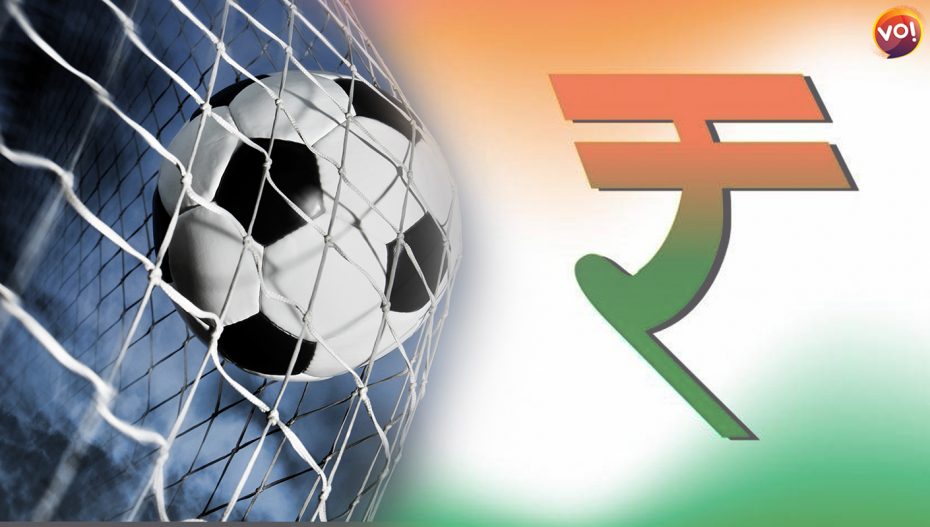Santanu Bhattacharya is a hardcore soccer fan who has been following this global sport since the early ’90s. Having mostly followed World Cup football and the local East Bengal, Mohun Bagan Derby leagues, and more he started following club level – EPL, La Liga and other international leagues for a decade. This year too, Kolkata born Bhattacharya relished his lockdown moments watching Copa America and European League matches when many of his friends binge-watched web series on Netflix.
“Football is like a second life for me mostly, because of the action, passion and following communities in social media. Also, the aspect of fixing (matches) isn’t there in football or at least, I am not aware of it. I would watch EPL with passion even if I have pending work,” said Bhattacharya, who also works in a leading multinational giant in Gurgaon.
Bhattacharya was one of the 50 million viewers who tuned into Sony Pictures Sports Network to watch the entire tournament of the European League. He was also among the 100 million Indian viewers who were glued to their electronic devices (TV, iPad, smartphones, and more) to watch the FIFA World Cup 2018 and will be among the 150-160 million viewers (projected) who are gearing up to watch the 2022 World Cup
broadcasted live from Qatar.
Marquee global footballing events have always had a following in India and more in traditional football pockets. “Coupled with the young, mobile and upmarket metropolitan crowd, which has a preference for the sport of football, the sport is gaining more salience,” said Nikhil Sharma, founder and CEO of zlait Sports Management Pvt Ltd. zlait is a sports management company specialising in sports infrastructure, player representation, technical consultancy, marketing and sponsorship and media advisory.
On more than one occasion, FIFA leaders, have described India as the ‘sleeping giant of football’. The Indian football market is witnessing unprecedented growth due to multiple factors. First, the 2017 U-17 World Cup has raised attention to the sport and its potential by breaking previous attendance records with over 1.3 million spectators. Second, the
Indian Super League (ISL), established in 2013, is leading the change in India as a developing football market. It has 155 million followers in the country and is the fifth-largest football league in the world in terms of average spectator attendance.
Football clubs have also attracted international attention (for instance, Manchester City acquired a majority stake in Mumbai City FC). To top it all, India rose from 173rd position in the FIFA world rankings in 2015 to 105th now (as of May 27). Industry observers reckon that the football industry per se has tremendous business potential, especially in the fields of marketing, broadcasting, and sponsorship. “The overall pie is only growing as the domestic tournaments are growing leaps and bounds with the support of corporate giants like Reliance, Jindals, and others. Like any business/industry when big money starts getting invested there is an overall improvement in the sector. The infrastructure improves, the talent pool improves, which would lead to improved content and thus, the community around it grows and in the end, the commerce will grow as the effect,” said Darshan M, a serial sports entrepreneur.
As per Praxis global Alliance, technology-led business research and solution firm, ISL is the leading football league that has doubled its revenue from US$ 23M (Rs 172 crores) in FY-15 to US$ 51M (Rs 385 crores) in FY-19. The league is nearing profitability as losses
narrowed from US$ 16.5M (Rs 124 crores) in FY-15 to just US$ 0.5M (Rs 4 crores) in FY-19. The broadcaster, Star India projected to earn US$ 27M (Rs 200 crores) ad revenue from ISL 2019 and sold ad inventory at a rate of US$ 1.3-2K (Rs 1-1.5 lacs) for a 10-sec ad, as per Praxis.
The football followership in urban areas was ~45 per cent in 2017, up from ~30 per cent in 2013 and the reasons for growth include increased internet access and data costs, free streaming (like a Facebook deal to stream La-Liga in India) and favourable demographics. “This space is also seeing an increase in sponsorships and investments. International players are realizing the potential (like La-Liga launched a football school in India in 2018). This trend is also supported by the fact that in 2020, ISL saw its opening viewership jump by 16 per cent,” said Madhur Singhal, MD of Praxis.
While a surging fan base is a prerequisite, many reckon that the largest enabler is the upward thrust from the government. As Perseus K. Daruwala, Director of Sporloc, India’s leading online sports platform informed, “The government has to start getting more aggressive in their support towards athletes. People in India don’t see sports as a genuine career option (which is not the case in other countries). The government needs to do more for individuals and organisations that are giving sports a boost.”
As with all sports in India, there are likely to be some bumps in the road ahead for Indian Football. But one thing is for certain and that is there is a loyal and growing fanbase, and the increase in available digital content should help give those fans further access to the sport they love.
“Football is growing at a decent pace in India, both business-wise and as a sport overall. Some countries are moving faster but the overall growth of the sport in India is good. A more expansive and intense domestic elite structure can accelerate growth even further,” said Sharma from zlait.













